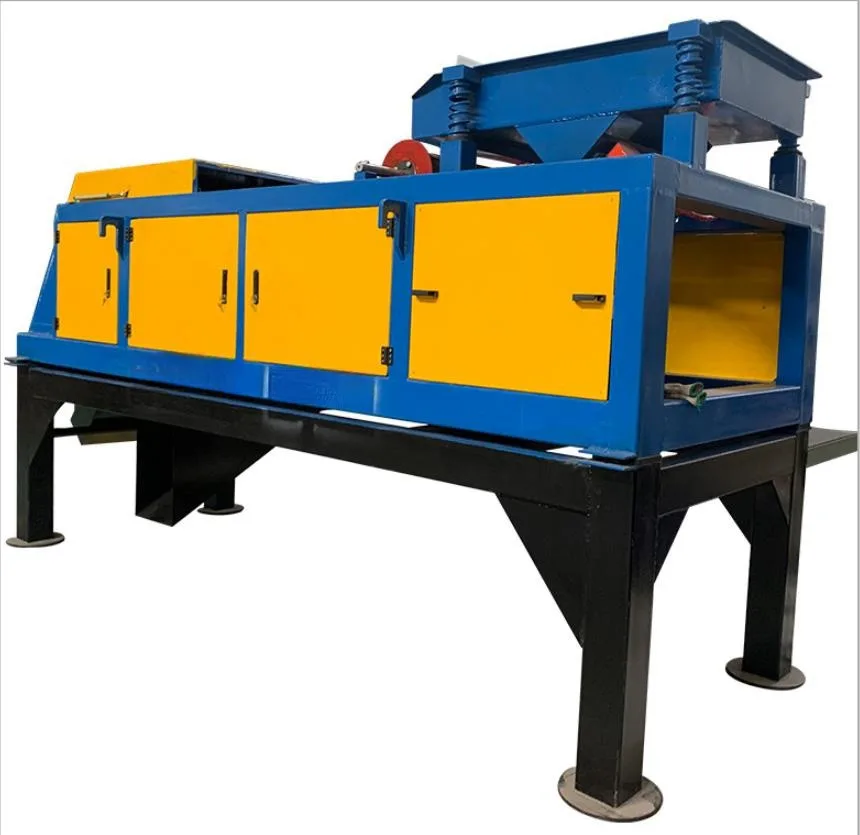
In the world of recycling and run off direction, efficiency and precision are key. One applied science that has importantly contributed to up these aspects is the Eddy Current Separator(ECS). This sophisticated patch of equipment plays a critical role in sort non-ferrous metals from a variety of waste streams. By harnessing the principles of electromagnetism, it enables the recycling manufacture to be more operational and environmentally property. But how does an Eddy Current Separator work, and what makes it so worthful for enhancing recycling and stuff separation? Let's break it down. eddy current separator.
What is an Eddy Current Separator?
An Eddy Current Separator is a type of machine used to separate non-ferrous metals(like atomic number 13, copper, and plaque) from interracial stuff streams. It works by creating a high-frequency magnetic force field that induces electrical currents(called eddy currents) within conductive metals. These currents then generate a secondary magnetized sphere that repels the non-ferrous metals away from other materials, allowing them to be easily gathered and spaced.
How Does an Eddy Current Separator Work?
The workings principle behind the Eddy Current Separator can be explained in a few simpleton stairs:
-
Magnetic Rotor: The heart of the ECS is a rotating drum or transporter belt equipped with a right magnetized rotor coil. The rotor coil generates a high-frequency cyclical magnetised arena.
-
Induction of Eddy Currents: As interracial material passes through the magnetised area, conductive materials(such as metals) experience a change in attractable flux, which induces circulating eddy currents within these metals.
-
Repulsion of Non-Ferrous Metals: The eddy currents produced in the non-ferrous metals produce a magnetised domain that opposes the rotating magnetized domain. This results in a skanky force, causing these metals to be ejected from the stuff stream.
-
Separation: As the non-ferrous metals are repelled, they are orientated into a split solicitation area, departure behind non-metallic materials and metal metals(which are untouched by the magnetic field).
This specific legal separation work is fast and extremely effective, making ECS an invaluable tool for waste sorting.
Applications of Eddy Current Separators
Eddy Current Separators are widely used in industries where separation of materials is crucial. Some of the most commons applications include:
-
Recycling Centers: ECS is used extensively in municipal waste recycling facilities to regai non-ferrous metals from menag run off, physics run off(e-waste), and mixed impressionable streams. By efficiently removing metals like Al and , ECS helps boost the timbre and value of recycled materials.
-
Scrap Metal Processing: In junk yards and metallic element processing plants, ECS helps in sort different types of metals, facultative operators to quickly split worthy non-ferrous metals from less worthful materials like plastics, wood, and paper.
-
Mining and Mineral Processing: The technology can also be used in minelaying operations, where non-ferrous minerals and metals need to be distributed from run off rock or ore.
-
C&D Waste Sorting: Construction and (C&D) waste, which contains a mix of metal, wood, and other materials, can be efficiently processed using ECS to part metallic element waste for recycling, promoting a environment.
Benefits of Eddy Current Separators in Recycling
The borrowing of ECS has revolutionized the recycling industry, offer several key advantages:
1. Improved Separation Efficiency
Eddy Current Separators are extremely operational at identifying between non-ferrous metals and other materials, significantly rising separation truth compared to manual sort or less specialized . This substance more valuable metals are recovered, which boosts recycling efficiency.
2. Cost-Effective
Although the initial investment funds in an ECS can be essential, its long-term benefits often overbalance the costs. By automating the separation process, ECS reduces labour and increases throughput. This leads to high returns for recyclers, particularly as for non-ferrous metals like Al continues to grow.
3. Environmentally Friendly
By convalescent worthy non-ferrous metals that would otherwise be lost in waste streams, ECS contributes to reduction the need for virgin material extraction. This reduces state of affairs bear on, vim using up, and nursery gas emissions associated with minelaying and production of new metals.
4. Enhanced Material Quality
The pureness of the found metals is crucial for the timbre of recycled products. ECS ensures high pureness by effectively separating non-ferrous metals from contaminants. This results in high-quality recycled metals that can be used in manufacturing new products, further promoting sustainability.
5. Flexibility in Material Handling
Eddy Current Separators are extremely pliable and can be used with a wide variety of materials. Whether with modest or vauntingly volumes of waste, ECS can be configured to wield different types of feed stuff, qualification it a varied root for many industries.
Conclusion
Eddy Current Separators are an necessity engineering in Bodoni recycling and waste management. By using the principles of magnetism induction, they ply an efficient, cost-effective, and environmentally friendly method for separating non-ferrous metals from run off streams. As demand for recycled materials increases and the need for property practices grows, the role of ECS in enhancing recycling and separation accuracy will only become more vital.
In addition to rising the quality of recycled metals, ECS supports a broadside thriftiness by sanctioning the retrieval of valuable resources that would otherwise be cast-off. Whether in assemblage waste recycling, scrap metal processing, or even mining, Eddy Current Separators are portion innovation and in the run off management and recycling industries.